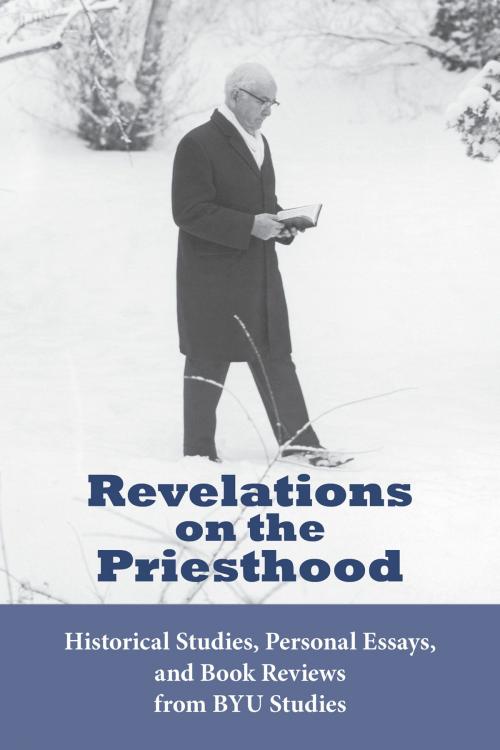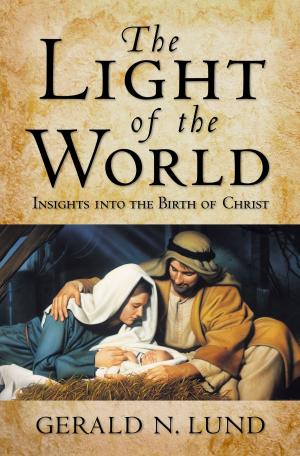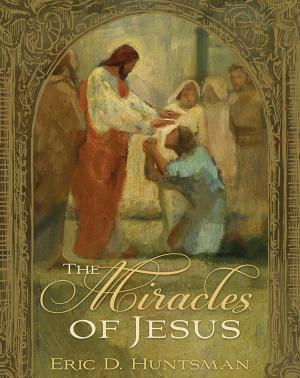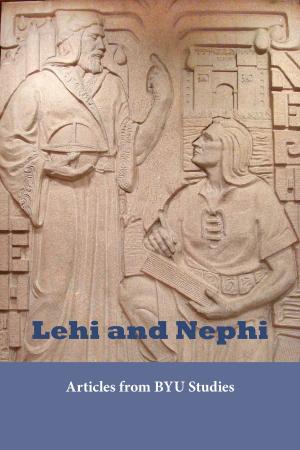Revelations on the Priesthood
Historical Studies, Personal Essays, and Book Reviews from BYU Studies
Nonfiction, Religion & Spirituality, Christianity, Denominations, Mormonism| Author: | BYU Studies | ISBN: | 9781938896149 |
| Publisher: | Deseret Book Company | Publication: | January 1, 2011 |
| Imprint: | BYU Studies | Language: | English |
| Author: | BYU Studies |
| ISBN: | 9781938896149 |
| Publisher: | Deseret Book Company |
| Publication: | January 1, 2011 |
| Imprint: | BYU Studies |
| Language: | English |
In the April 1937 general conference, President David O. McKay, Second Counselor in the First Presidency, asked the following question, “If at this moment each one [of you] were asked to state in one sentence . . . the most distinguishing feature of the Church of Jesus Christ of Latter-day Saints, what would be your answer?” He then said: “My answer would be . . . divine authority by direct revelation.” Priesthood authority revealed from heaven is the foundation upon which the Church is built.
This collection of writings explores the revelatory nature of authority in the Church, beginning with the restoration of priesthood authority and keys through the ministering of angels and including the 1978 revelation on priesthood. William G. Hartley presents a history of how the priesthood developed from a simple seed planted in 1829 to a fairly complex tree by the time of Joseph Smith’s death in 1844. The unfolding of priesthood restoration produced two major branches, several offices, an organizational hierarchy, and specific instructions on the proper use of priesthood authority. Brian Q. Cannon and the BYU Studies staff then present seventy contemporaneous documents about the restoration of the priesthood.
The middle portion of the book addresses the 1978 revelation on priesthood in great detail. Ronald K. Esplin gives circumstantial historical evidence that the priesthood denial to members of black African descent did not originate with Brigham Young, but likely had its roots in Nauvoo prior to Joseph Smith’s death. Edward L. Kimball presents a fascinating history of the revelation received by his father, President Spencer W. Kimball, and the Quorum of the Twelve Apostles, which made priesthood blessings available to all worthy male members of the Church. Kimball’s account traces the roots of the priesthood ban, examines doctrinal implications of the policy, suggests various influences that impelled his father to make this a matter of long study and prayer, presents a marvelous narrative of the revelation itself, and, finally, describes the aftermath of the revelation. Marcus H. Martins, Emmanuel Abu Kissi, and Tessa Meyer Santiago offer perspectives on how the 1978 revelation affected Church members in Brazil, Africa, and South Africa.
Finally, as extra content, reviews of seven books give a glimpse of issues related to the 1978 priesthood revelation: race and slavery in Judaism, Christianity, and Islam; Mormon conceptions of race and lineage; social and historical origins of the Church’s pre-1978 priesthood policy; the first official LDS missionaries in Africa; and the personal experiences of Church members with black African ancestry.
In the April 1937 general conference, President David O. McKay, Second Counselor in the First Presidency, asked the following question, “If at this moment each one [of you] were asked to state in one sentence . . . the most distinguishing feature of the Church of Jesus Christ of Latter-day Saints, what would be your answer?” He then said: “My answer would be . . . divine authority by direct revelation.” Priesthood authority revealed from heaven is the foundation upon which the Church is built.
This collection of writings explores the revelatory nature of authority in the Church, beginning with the restoration of priesthood authority and keys through the ministering of angels and including the 1978 revelation on priesthood. William G. Hartley presents a history of how the priesthood developed from a simple seed planted in 1829 to a fairly complex tree by the time of Joseph Smith’s death in 1844. The unfolding of priesthood restoration produced two major branches, several offices, an organizational hierarchy, and specific instructions on the proper use of priesthood authority. Brian Q. Cannon and the BYU Studies staff then present seventy contemporaneous documents about the restoration of the priesthood.
The middle portion of the book addresses the 1978 revelation on priesthood in great detail. Ronald K. Esplin gives circumstantial historical evidence that the priesthood denial to members of black African descent did not originate with Brigham Young, but likely had its roots in Nauvoo prior to Joseph Smith’s death. Edward L. Kimball presents a fascinating history of the revelation received by his father, President Spencer W. Kimball, and the Quorum of the Twelve Apostles, which made priesthood blessings available to all worthy male members of the Church. Kimball’s account traces the roots of the priesthood ban, examines doctrinal implications of the policy, suggests various influences that impelled his father to make this a matter of long study and prayer, presents a marvelous narrative of the revelation itself, and, finally, describes the aftermath of the revelation. Marcus H. Martins, Emmanuel Abu Kissi, and Tessa Meyer Santiago offer perspectives on how the 1978 revelation affected Church members in Brazil, Africa, and South Africa.
Finally, as extra content, reviews of seven books give a glimpse of issues related to the 1978 priesthood revelation: race and slavery in Judaism, Christianity, and Islam; Mormon conceptions of race and lineage; social and historical origins of the Church’s pre-1978 priesthood policy; the first official LDS missionaries in Africa; and the personal experiences of Church members with black African ancestry.









![Cover of the book All That Makes Life Bright: The Life and Love of Harriet Beecher Stowe [A Historical Proper Romance] by BYU Studies](https://www.kuoky.com/images/2017/september/300x300/9781629735351-dgrZ_300x.jpg)





